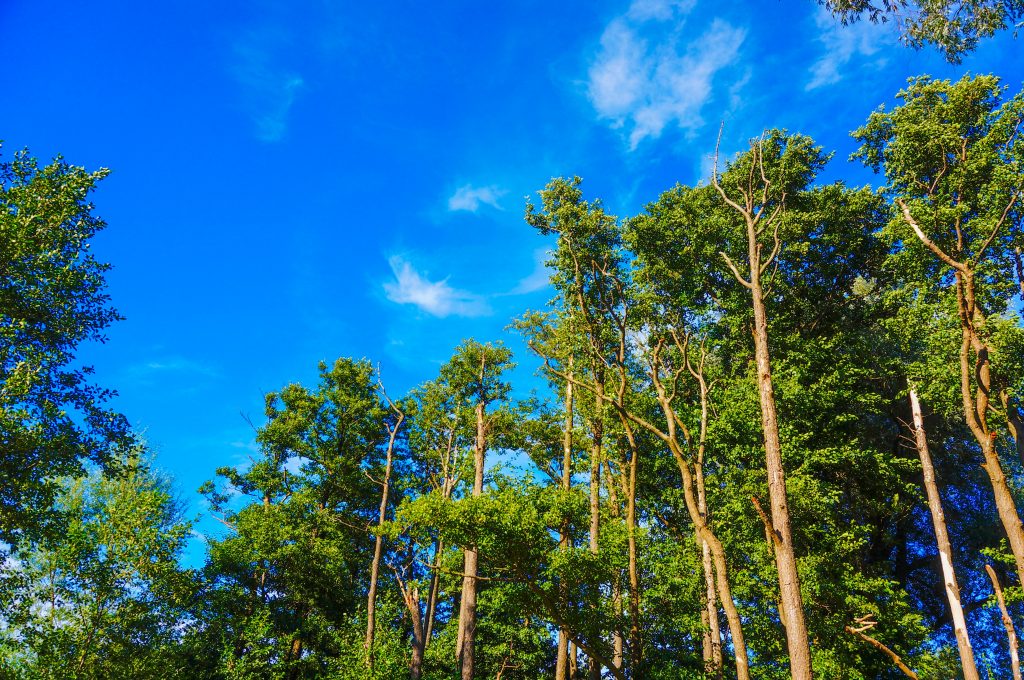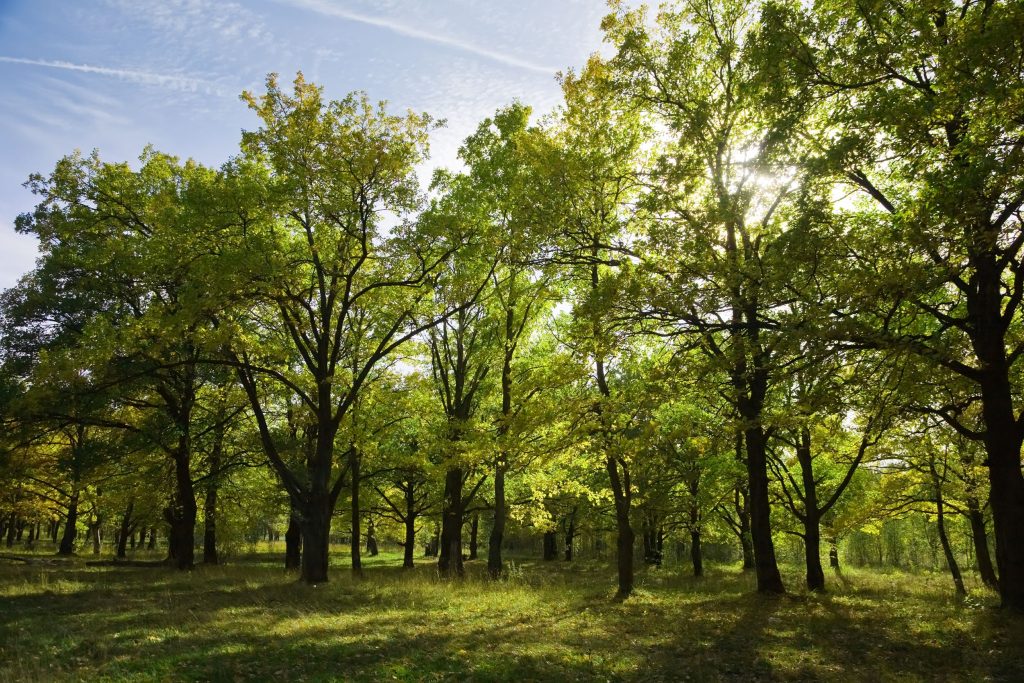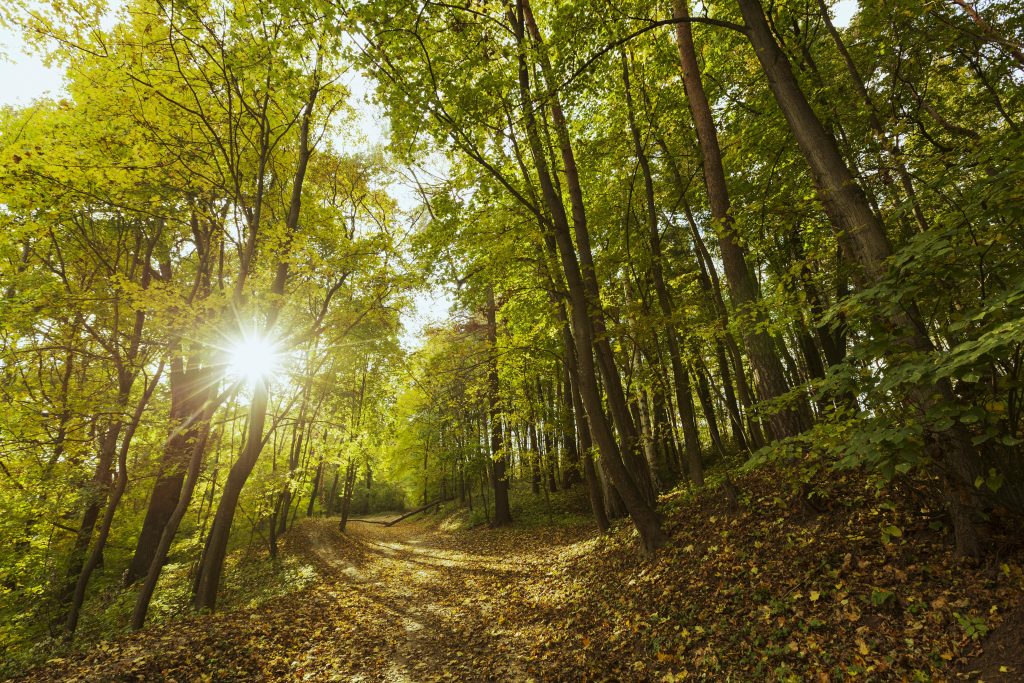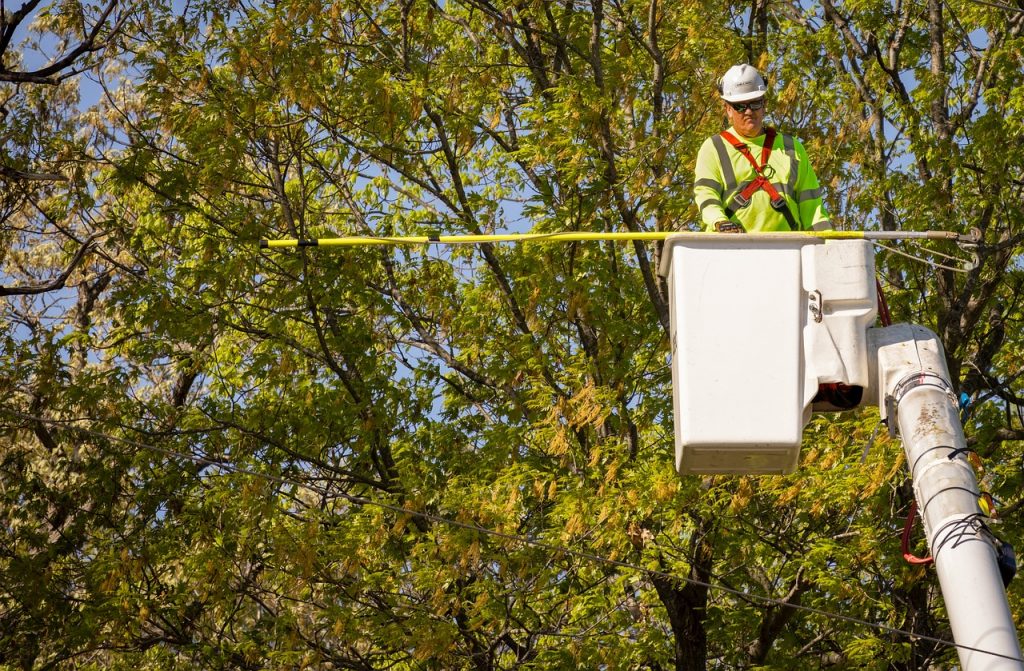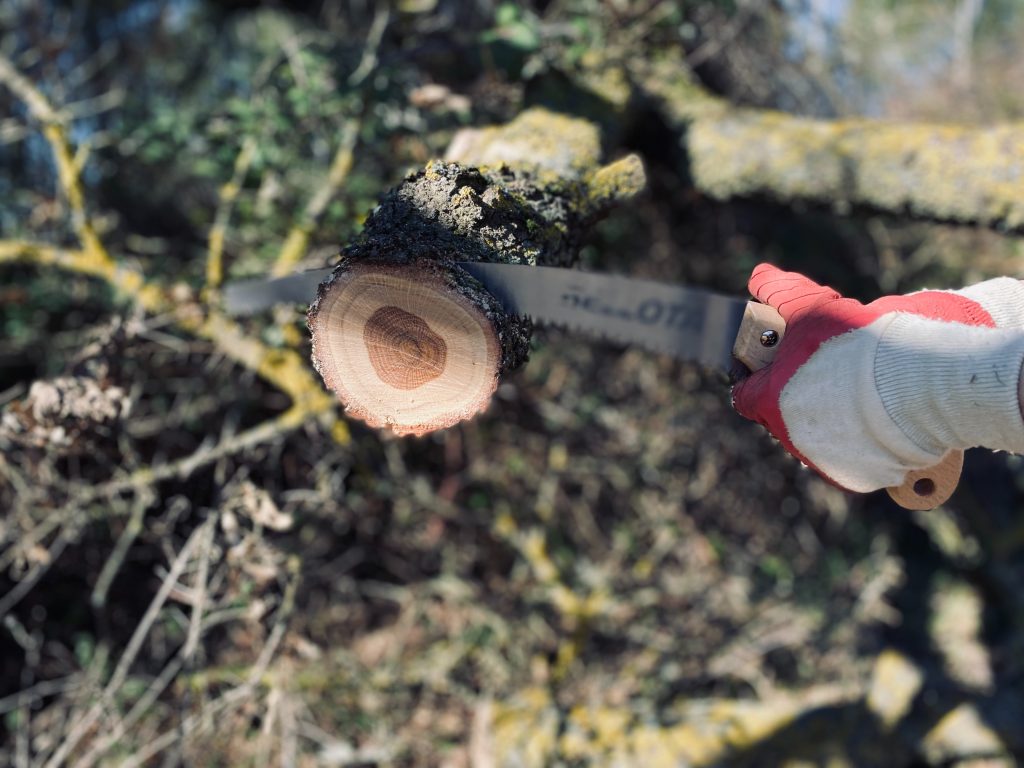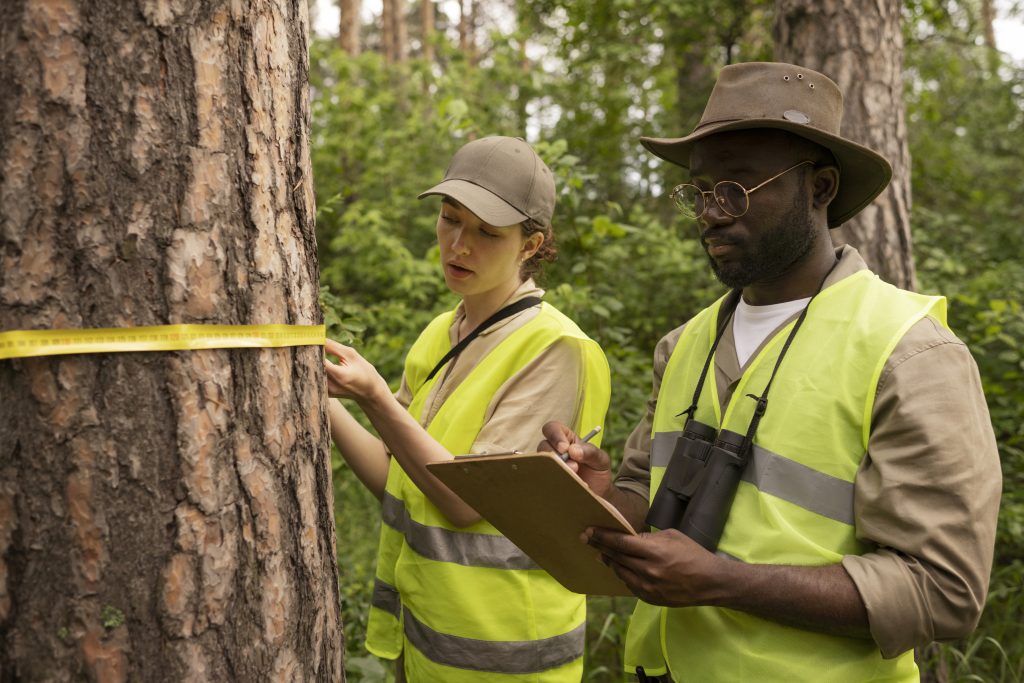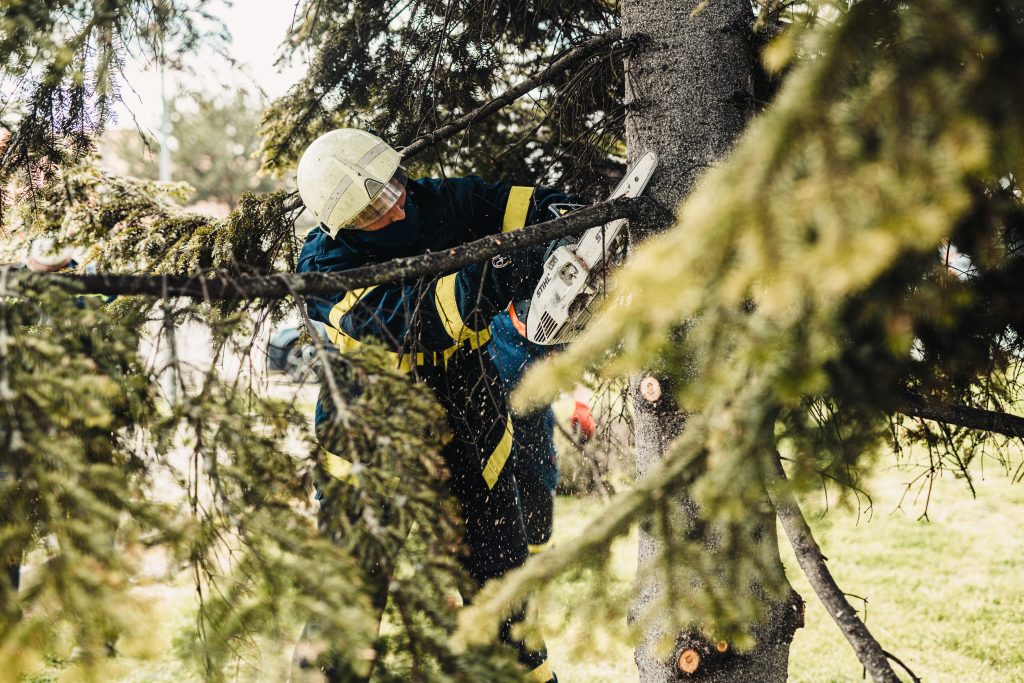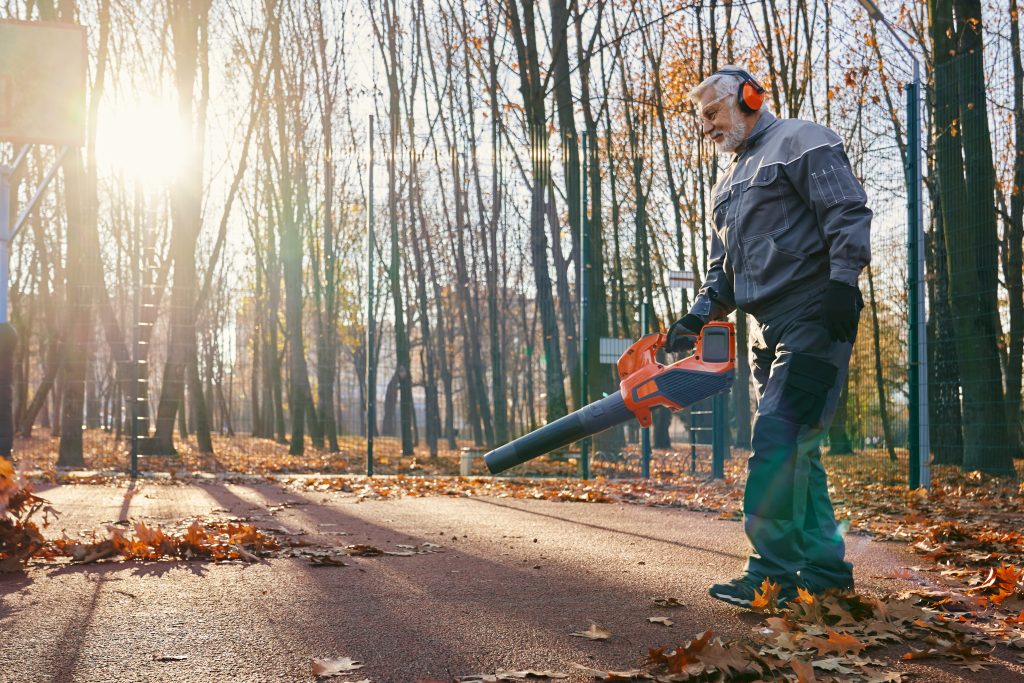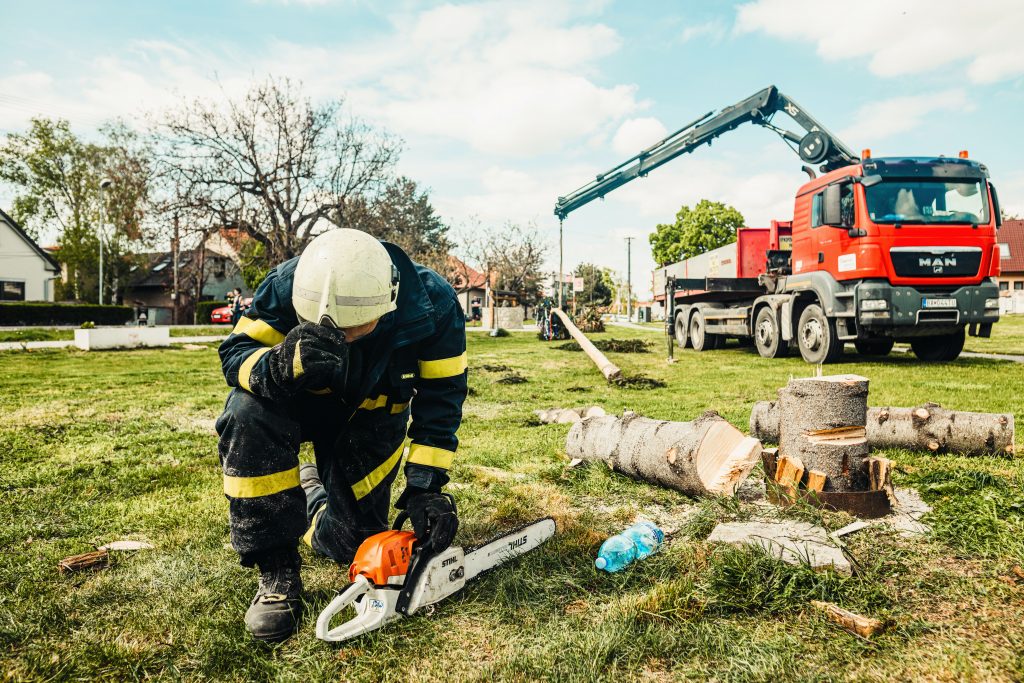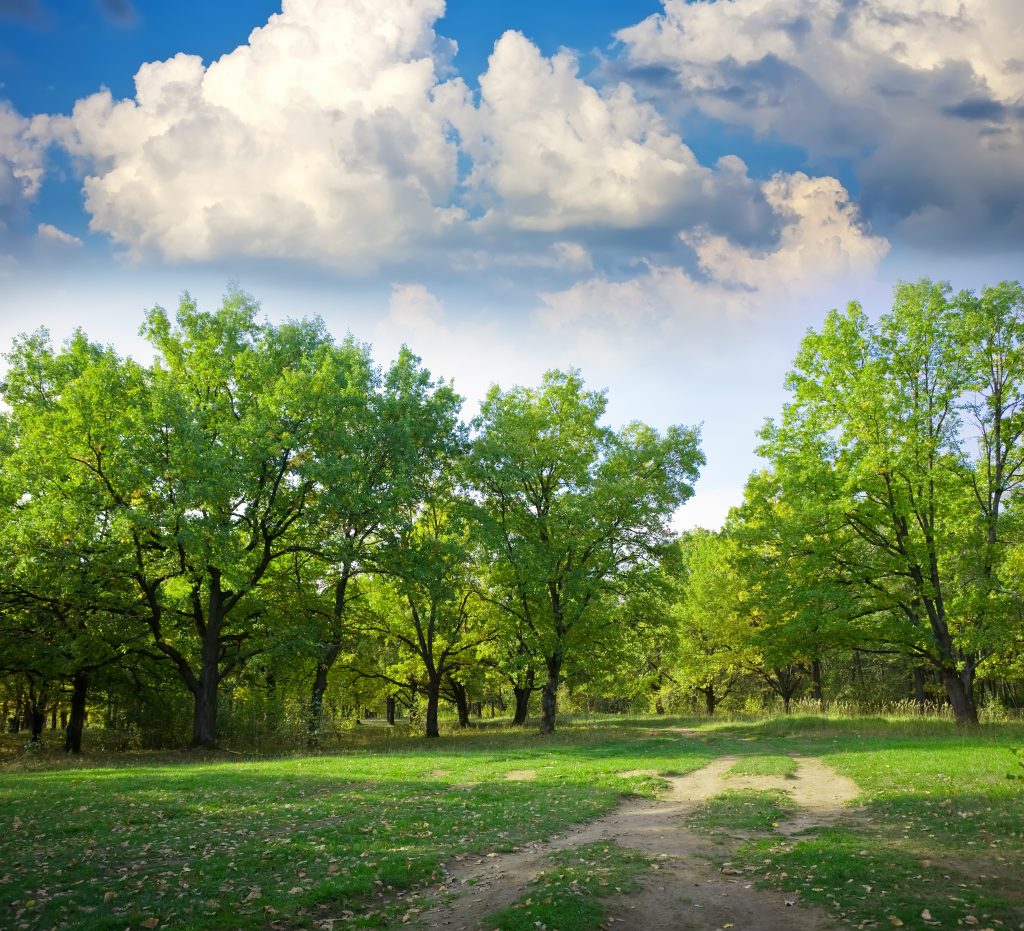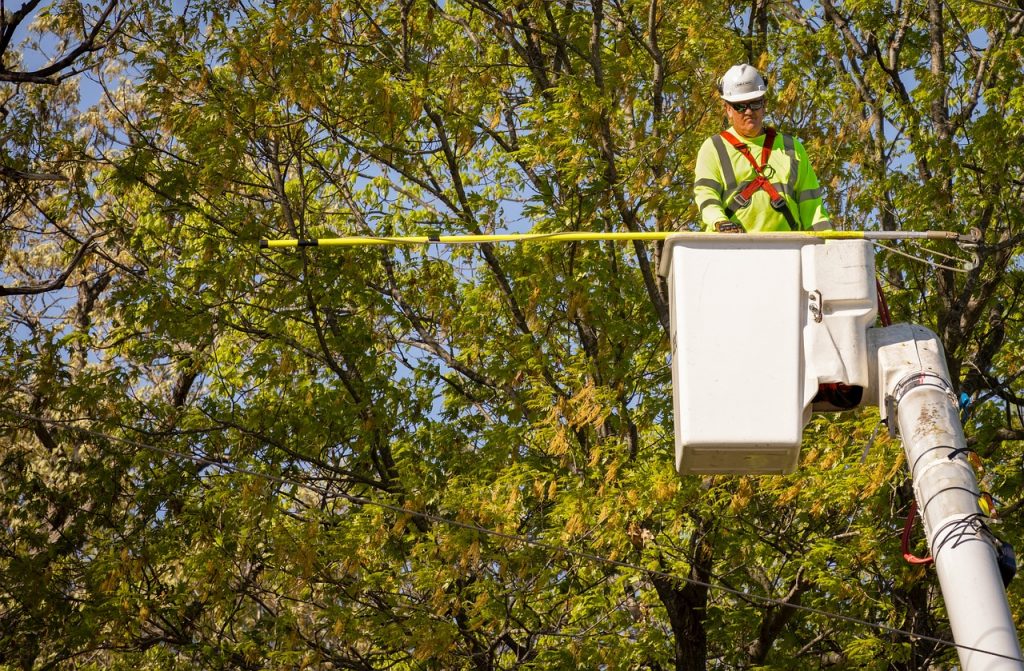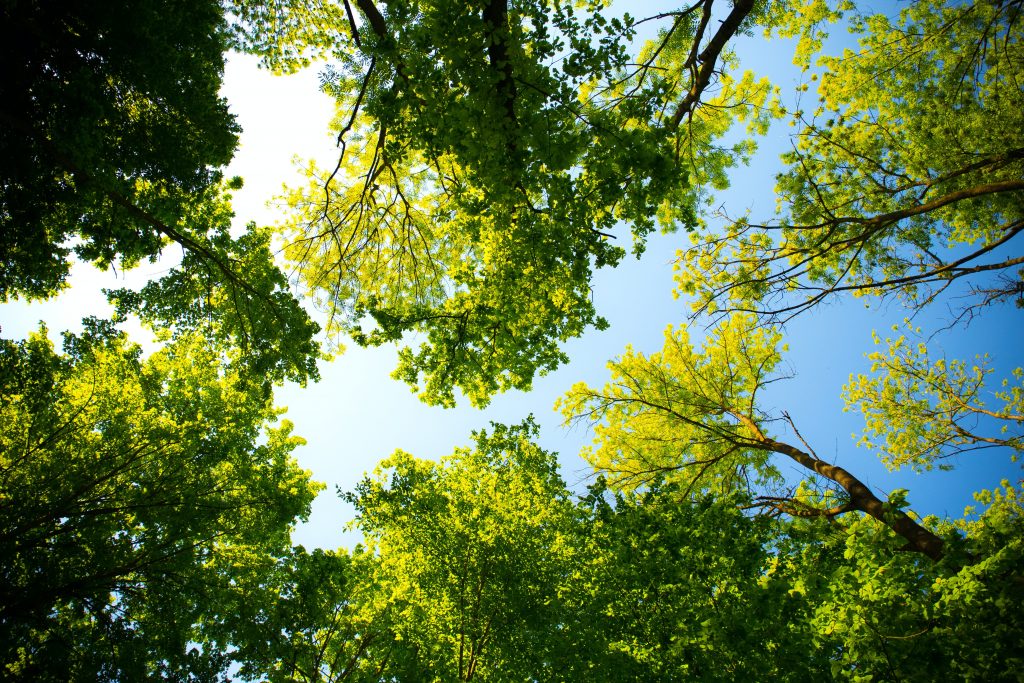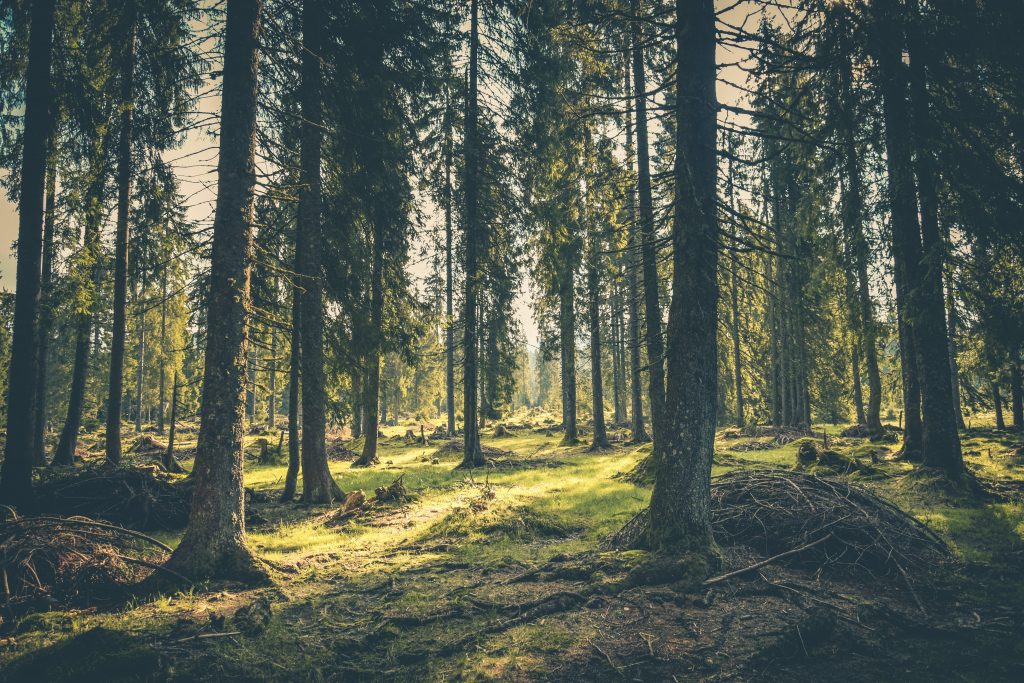How to Know if Tree Removal Service Is Licensed in Bountiful Utah?
How to Know if Tree Removal Service Is Licensed in Bountiful Utah?
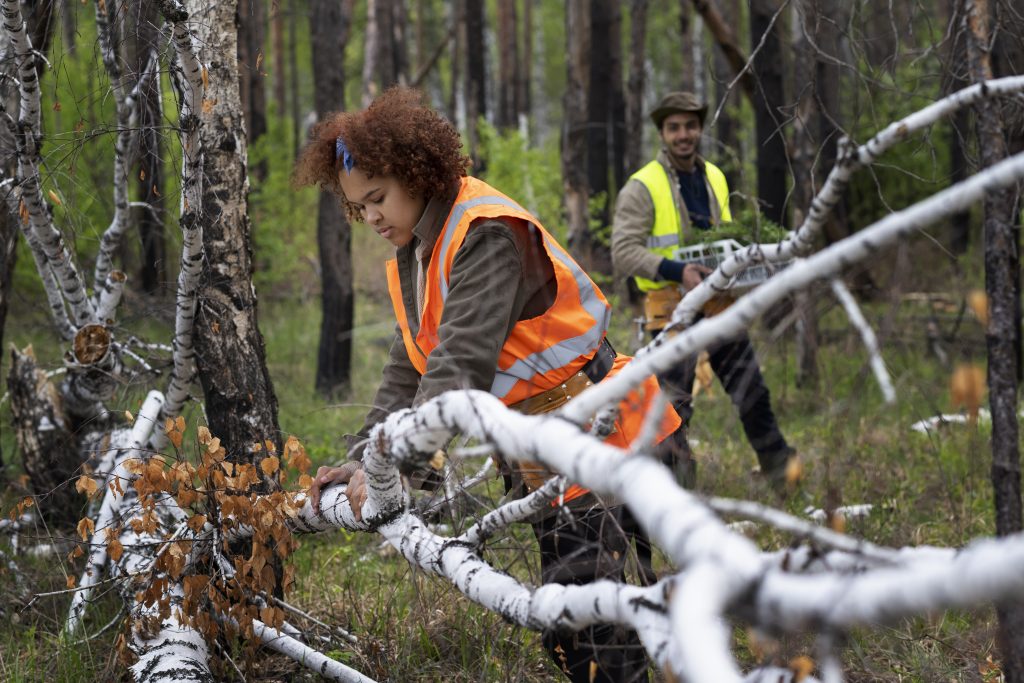
Are you concerned about the safety and legality of tree removal services in Bountiful, Utah? Before entrusting your property to just anyone with a chainsaw, it’s crucial to know if they are licensed. In this article, we will guide you through the process of verifying the licensing of tree removal services. By following our expert tips and action steps, you can ensure that the service you choose is not only skilled but also compliant with local regulations. Don’t take any risks when it comes to your trees – let us show you how to make a confident and informed decision.
Key Takeaways
- Verify the license validity of tree removal companies before hiring.
- Understand the licensing requirements in Bountiful, Utah.
- Check for proof of insurance, certifications, and training.
- Prioritize licensed professionals for safety and quality assurance.
Introduction: Licensing Requirements for Tree Removal Services
Before hiring a tree removal service in Bountiful, Utah, it’s important to understand the licensing requirements. By adhering to these regulations, you can ensure that you are hiring a professional who is qualified and capable of safely removing trees from your property. Here are the benefits of hiring licensed professionals:
- Expertise: Licensed tree removal service providers have undergone training and have the necessary knowledge and skills to handle tree removals efficiently and effectively. They are well-versed in the techniques and equipment required to safely remove trees without causing damage to surrounding structures or the environment.
- Insurance coverage: Licensed professionals carry liability insurance, which protects you from any potential damages or injuries that may occur during the tree removal process. This provides you with peace of mind knowing that you are protected in case of any unforeseen incidents.
- Compliance with regulations: Licensed tree removal services comply with all local regulations and ordinances regarding tree removal. They are aware of any permits that may be required and will ensure that all necessary paperwork is completed correctly, saving you time and potential legal issues.
- Professionalism: Licensed professionals follow a code of ethics and are committed to providing high-quality service. They prioritize customer satisfaction and will go above and beyond to ensure that the tree removal process is carried out smoothly and efficiently.
Tree Removal Service History
To find out about the history of tree removal services in Bountiful, you can check online directories and read customer reviews. Over the years, tree removal service regulations have evolved to ensure the safety and quality of the services provided. In Bountiful, tree removal service qualifications are set in place to protect both the customers and the environment.
In the past, tree removal services were often unregulated, leading to untrained and inexperienced individuals attempting hazardous tree removals. This posed a significant risk to both the workers and the surrounding properties. However, as awareness grew about the potential dangers and environmental impact of improper tree removal, regulations were established to enforce proper qualifications and licensing for tree removal service providers.
Today, tree removal service providers in Bountiful must meet specific qualifications to obtain and maintain their licenses. These qualifications typically include proper training, experience, and adherence to safety standards. By ensuring that only qualified individuals or companies are licensed, Bountiful aims to protect its residents and preserve the beauty of its natural surroundings.
Knowing the history and regulations of tree removal services in Bountiful can help you make an informed decision when hiring a tree removal service. Now, let’s dive into some tips to help you identify if a tree removal service is licensed and reliable.
Tips
In Bountiful, Utah, there are specific licensing requirements for professionals in various fields, including tree removal services. It is crucial to verify the license validity of any service provider before hiring them to ensure they meet the necessary qualifications and regulations. Licensed professionals bring expertise, training, and accountability to their work, making it essential to prioritize their services for the safety and quality of the job.
Licensing Requirements in Bountiful
You should check if the tree removal service in Bountiful, Utah is licensed. Tree removal regulations in Bountiful require that all companies operating in this industry obtain a valid license. The licensing process involves meeting specific criteria set by the local authorities to ensure that the service provider is qualified and capable of performing tree removal safely and efficiently. To obtain a license, companies often need to provide proof of insurance, certifications, and training. They may also need to pass inspections and comply with environmental regulations. Verifying the license validity is crucial to ensure that the company you hire is compliant with local regulations and has the necessary expertise to handle tree removal properly. It’s important to remember that checking the license is just the first step in finding a reputable and trustworthy tree removal service in Bountiful, Utah.
Verifying License Validity
Verifying the license is an essential step in ensuring the tree removal company in Bountiful, Utah meets local regulations and has the necessary qualifications. When it comes to tree removal, it is crucial to hire professionals who are licensed and qualified to perform the task safely and efficiently. To verify the credentials of a tree removal company, you should check if they have a valid license issued by the relevant authority in Bountiful. This license ensures that the company has met the necessary requirements and has undergone the proper training to handle tree removals. By checking the qualifications and verifying the license of the company, you can have peace of mind knowing that you are hiring a reputable and trustworthy professional. Entrusting your tree removal needs to licensed professionals is of utmost importance as it guarantees that the job will be done right and in compliance with the regulations.
Importance of Licensed Professionals
To ensure the safety and quality of your tree removal project, it’s crucial to hire professionals who are licensed and qualified to handle the job. Hiring licensed professionals for your tree removal needs brings numerous benefits. Firstly, licensed professionals have undergone the necessary training and have the expertise to handle tree removal safely and efficiently. They are knowledgeable about the best practices and techniques to ensure that the job is done correctly. Secondly, licensing ensures that the professionals have met certain standards and regulations set by the industry. This means that they are committed to upholding high-quality workmanship and ethical practices. Additionally, licensed professionals are usually insured, providing you with peace of mind in case of any accidents or damages that may occur during the tree removal process. With these benefits in mind, it’s important to understand the traits of licensed tree removal services.
Traits of Licensed Tree Removal Services
Licensed tree removal services in Bountiful, Utah possess certain traits that set them apart. These traits are a result of the tree removal service regulations in place to ensure the safety and quality of the work being done. By hiring licensed professionals, you can enjoy a range of benefits.
Firstly, licensed tree removal services have undergone rigorous training and certification processes. This means that they possess the necessary knowledge and skills to safely and effectively remove trees. They are well-versed in proper tree removal techniques, ensuring that the job is done efficiently without causing damage to surrounding property or endangering anyone’s safety.
In addition to their expertise, licensed professionals also carry liability insurance. This protects you from any potential damages that may occur during the tree removal process. If any accidents or property damage were to happen, the insurance coverage provided by licensed tree removal services will take care of the expenses, providing you with peace of mind.
By choosing licensed tree removal services, you are not only ensuring the safety of the job, but you are also supporting local businesses that are dedicated to providing high-quality services. These professionals take pride in their work and strive to exceed customer expectations.
To verify the licensing of a tree removal service, there are a few steps you can take.
Steps to Verify Tree Removal Service Licensing
When hiring a tree removal service, you can easily check their licensing status by contacting the relevant authorities or checking their website. Ensuring that the tree removal service you choose is properly licensed is crucial for a variety of reasons. To help you navigate the licensing verification process, here are some steps you can take:
- Contact the local government agency responsible for regulating tree removal services in your area. They will be able to provide you with information on the licensing requirements and verify if a specific company is licensed.
- Check the company’s website for any licensing information. Reputable tree removal services often display their licensing details prominently on their website.
- Ask the tree removal service for their license number and cross-reference it with the information provided by the local government agency. This will help you confirm the validity of their license.
- Look for any additional certifications or memberships in professional organizations. These can further demonstrate the expertise and commitment of the tree removal service to adhere to industry standards.
- Read customer reviews and testimonials to gauge the quality of service provided by the company. A licensed tree removal service should have a positive track record and satisfied customers.
Goals
A reputable tree removal service should have clear goals that align with the needs and expectations of their customers. When it comes to tree removal service regulations, hiring professionals is essential to ensure that the job is done safely and efficiently. By hiring a licensed tree removal service, you can benefit from their expertise and experience, as well as the following:
| Benefits of Hiring Professionals |
|---|
| Skilled and Trained Staff |
| Proper Equipment |
| Safety Measures |
| Insurance Coverage |
| Compliance with Regulations |
Having clear goals allows a tree removal service to provide high-quality services while adhering to the necessary regulations. Their skilled and trained staff are knowledgeable about the proper techniques and safety measures required for tree removal. Additionally, they have access to the right equipment, ensuring the job is done efficiently and effectively. Hiring professionals also provides peace of mind as they carry insurance coverage, protecting you from any liability in case of accidents or damages. Lastly, licensed tree removal services comply with regulations, ensuring that the work is done in a legal and responsible manner.
Transition: Now that you understand the importance of hiring a licensed tree removal service, let’s explore the habits of reputable professionals in the industry.
Habits of Licensed Tree Removal Services
Reputable tree removal services typically have a set of habits that contribute to their professionalism and efficiency. One of the most important habits is being staffed by licensed professionals. When you hire a licensed tree removal service, you can have peace of mind knowing that the team working on your property is trained and qualified to handle the job. Licensing ensures that the professionals have gone through the necessary training and have the required knowledge and skills to safely remove trees.
There are several benefits of hiring licensed professionals for tree removal. First and foremost, they have a deep understanding of the best practices and techniques for tree removal, ensuring that the job is done correctly and safely. Licensed professionals also carry liability insurance, which protects you in case of any damage or accidents during the removal process. Additionally, working with licensed professionals means that you are supporting a legitimate business that complies with local regulations and is committed to maintaining high standards of quality and safety.
Now that you know the importance of hiring licensed professionals, let’s delve into a real-life story that highlights the significance of licensing in the tree removal industry.
A Real-Life Story
Let me share with you a real-life story that illustrates the importance of licensing in the tree removal industry. One day, a homeowner in Bountiful, Utah decided to have a large tree in their backyard removed. They hired a tree removal service without checking if they were licensed or not. The company seemed professional and had positive customer testimonials, so the homeowner felt confident in their choice.
However, during the tree removal process, a mishap occurred. The tree accidentally fell onto the neighbor’s property, causing damage to their fence and outdoor furniture. The neighbor was understandably upset and demanded compensation for the damages.
Unfortunately, because the tree removal service was not licensed, they did not have the necessary insurance to cover such incidents. The homeowner was left responsible for the costs, which amounted to thousands of dollars. This real-life experience serves as a cautionary tale, emphasizing the importance of hiring a licensed tree removal service.
Now, let’s move on to the next section, where we will explore some quotes from licensed tree removal services in Bountiful, Utah.
Quotes
I’ve gathered some quotes from licensed tree removal services in Bountiful, Utah for you to consider. When it comes to tree removal, hiring professionals offers numerous benefits. Firstly, they have the expertise and experience to safely remove trees without causing damage to your property. They are trained to handle complex situations, such as trees near power lines or structures. Additionally, professional tree removal services have the necessary equipment and tools to efficiently remove trees, saving you time and effort.
Now, let’s address some common misconceptions about tree removal services. One misconception is that anyone can remove a tree without professional help. However, tree removal can be dangerous and requires specialized skills and knowledge. Another misconception is that tree removal is always expensive. While costs can vary depending on factors such as tree size and location, professional services often offer competitive pricing and can provide you with a detailed estimate upfront.
In the next section, we’ll reveal some “secrets” to help you identify whether a tree removal service is licensed in Bountiful, Utah. These tips will empower you to make an informed decision and hire a reputable and licensed professional.
Secrets
Now that you have obtained quotes from different tree removal services in Bountiful, Utah, it’s time to dive into some secrets and gain insights on licensing. Knowing these secrets will help you make an informed decision and hire a licensed and reputable tree removal service.
One of the secrets to uncover is to ask the tree removal service for their license number. A legitimate and licensed company will have no problem providing you with this information. You can then verify the license number with the appropriate licensing authority to ensure its validity.
Another secret is to check if the tree removal service is insured. Accidents can happen during tree removal, and you want to make sure that the company has insurance coverage to protect you and their employees in case of any mishaps.
Furthermore, it is important to inquire about the experience and qualifications of the tree removal service. Ask if they have certified arborists on their team who are knowledgeable about tree care and removal techniques.
Insights on Tree Removal Service Licensing
To gain insights on licensing, you should inquire about the validity of the tree removal service’s license number with the appropriate authority. When it comes to tree removal service regulations, it is crucial to ensure that the company you hire is properly licensed. Licensed professionals have undergone the necessary training and have met the standards set by the licensing authority. By hiring a licensed tree removal service, you can have peace of mind knowing that they possess the knowledge and expertise needed to safely and efficiently remove trees from your property.
A licensed tree removal service is required to adhere to specific guidelines and regulations, which are put in place to protect both the workers and the customers. These regulations cover various aspects such as proper equipment usage, safety protocols, and environmental considerations. Licensed professionals are well-versed in these regulations and will follow them diligently to ensure a safe and responsible tree removal process.
Moreover, hiring a licensed tree removal service provides you with certain benefits. Licensed professionals have the necessary insurance coverage, which protects you from any liability in case of accidents or damages during the tree removal process. Additionally, licensed professionals have the expertise to assess the health and stability of trees, allowing them to make informed decisions on whether a tree needs to be removed or if it can be saved through alternative methods.
Benefits of Hiring a Licensed Tree Removal Service
Hiring a licensed tree removal service offers various benefits, such as insurance coverage and expert assessments of tree health and stability. When it comes to tree removal, it is crucial to prioritize safety and efficiency. By choosing a licensed professional, you can ensure that the job is done right.
One of the key benefits of certification is insurance coverage. Licensed tree removal services are required to have liability insurance, which protects you from any potential damages or accidents that may occur during the removal process. This gives you peace of mind knowing that you are protected financially.
In addition to insurance coverage, licensed professionals also provide expert assessments of tree health and stability. They have the knowledge and experience to identify potential hazards and determine the best course of action. This is especially important when dealing with large or complex tree removals.
Furthermore, hiring a licensed tree removal service ensures that the work is done in compliance with local regulations and industry standards. Licensed professionals are trained to follow proper procedures, ensuring safety for both the workers and the surrounding property.
By choosing a licensed tree removal service, you can take advantage of these benefits and have the peace of mind knowing that your tree removal needs will be handled by skilled and knowledgeable professionals.
In the subsequent section, we will discuss the lessons you can learn from licensed tree removal services and how to apply them to your own tree care practices.
Lessons
When hiring a service in Bountiful, it’s crucial to understand the licensing requirements in order to ensure you are choosing a reputable and qualified professional. Verifying a service’s license is as simple as contacting the appropriate licensing agency or performing an online search. It’s important to prioritize licensed professionals as they have met the necessary qualifications and standards, which ultimately leads to a higher quality of work and greater peace of mind for you as the customer.
Licensing Requirements in Bountiful
You can easily check if a tree removal service in Bountiful, Utah is licensed by contacting the appropriate local authorities. The licensing process for tree removal services is regulated by the regulatory authorities in Bountiful. These authorities ensure that companies meet certain criteria and standards before granting them a license. They evaluate factors such as the company’s experience, qualifications, and adherence to safety regulations. By contacting the local authorities, you can inquire about the validity of a tree removal service’s license. They will be able to provide you with information regarding the status of the company’s license and whether or not they are authorized to operate in Bountiful. Verifying a service’s license is crucial to ensure that you are hiring a reputable and qualified service provider for your tree removal needs.
Verifying a Service’s License
To verify a service’s license, it’s important to contact the appropriate authorities in Bountiful, Utah. When it comes to tree removal, it’s crucial to ensure that the company you hire has the necessary credentials and qualifications. Begin by researching the licensing requirements set by the city of Bountiful. Once you have a clear understanding of what is required, reach out to the appropriate department or agency to verify if the tree removal service you are considering is properly licensed. Provide them with the necessary information such as the company’s name and contact details. By checking their credentials, you can have peace of mind knowing that you are hiring a licensed professional who has met the necessary requirements to perform tree removal services safely and efficiently. Ensuring that you hire licensed professionals is essential to guarantee the quality of work and protect yourself from any potential liabilities.
Importance of Licensed Professionals
Hiring a licensed professional ensures that the work will be done safely and efficiently, giving you peace of mind. When it comes to tree removal services, the importance of qualifications cannot be overstated. Licensed professionals have undergone the necessary training and have the expertise to handle the job effectively. They are aware of the legal obligations and safety protocols that need to be followed throughout the process. By hiring someone who is licensed, you can be confident that the work will be done in compliance with all regulations and standards. Additionally, licensed professionals have the appropriate equipment and tools to carry out the task efficiently, saving you time and effort. With their expertise and knowledge, you can trust that your tree removal needs will be met with utmost professionalism. Transitioning into the subsequent section about ‘routines {yt}’, it is important to understand the necessary steps involved in maintaining the health and appearance of your trees.
Routines
A licensed tree removal service in Bountiful, Utah must follow specific routines to ensure safe and efficient operations. These routines are based on best practices that have been developed over years of experience in the industry. One of the first steps in the routine is to conduct a thorough assessment of the tree that needs to be removed. This assessment involves evaluating the size, condition, and location of the tree, as well as identifying any potential hazards or obstacles that may be present. Once the assessment is complete, the tree removal service will develop a plan for removing the tree. This plan will outline the steps that will be taken to safely and efficiently remove the tree without causing damage to surrounding structures or vegetation. During the actual tree removal process, the service will follow strict safety protocols, including the use of proper equipment and techniques. After the tree has been removed, the service will also take care of the clean-up and disposal of the debris. By following these routines and best practices, a licensed tree removal service can ensure that the job is done properly and safely.
Transition: While there are many benefits to hiring a licensed tree removal service, it is also important to consider the potential drawbacks or cons.
Pros and Cons
While there are many pros to consider, it is also important to think about the potential cons of hiring a licensed tree removal service. One of the major pros is that licensed tree removal services have the expertise and experience to safely and efficiently remove trees. They are knowledgeable about the different types of trees and can assess the risks involved in the removal process. Additionally, licensed tree removal services have the necessary equipment and tools to get the job done properly. They can handle large or difficult trees that may pose a danger to your property or surrounding areas.
However, there are also a few cons to hiring a licensed tree removal service. One potential con is the cost. Licensed services may charge higher rates compared to unlicensed individuals or companies. This is because they have invested in proper training, equipment, and insurance to provide a professional service. Another con is the limited availability. Licensed tree removal services are often in high demand, especially during peak seasons. This means you may have to wait for an appointment or schedule your tree removal well in advance.
Dos and Dont’s
To ensure a smooth experience, it’s important to follow these dos and don’ts when hiring a licensed tree removal service. By being aware of these guidelines, you can avoid common mistakes and ensure that you are working with a reputable and qualified company. Take a look at the table below to see a breakdown of the dos and don’ts when hiring a tree removal service.
| Dos | Don’ts |
|---|---|
| Research and ask for recommendations from friends and neighbors | Hire a company without checking their license and insurance |
| Get multiple quotes and compare prices | Choose the cheapest option without considering the quality of service |
| Check for proper equipment and safety measures | Overlook the importance of safety protocols |
| Read online reviews and testimonials | Ignore customer feedback and reviews |
| Ask for a written contract with details of the job and cost | Rely solely on verbal agreements |
Mistakes to Avoid
Mistakes can be easily avoided by thoroughly researching and checking the credentials of any tree removal company you are considering hiring. It is important to be aware of the common mistakes people make when choosing a tree removal service. One of the warning signs to look out for is a company that offers significantly lower prices than others in the area. While it may be tempting to choose the cheapest option, it could indicate that the company lacks proper licensing and insurance. Another mistake to avoid is not asking for references or reading online reviews. By neglecting to do so, you may miss crucial information about the company’s reputation and quality of work. Additionally, not verifying the company’s licensing and insurance can lead to potential liabilities if an accident occurs during the tree removal process. It is vital to ensure that the company you hire is fully licensed and insured to protect yourself and your property.
Key Takeaways
Remember, researching and checking credentials are essential steps to finding a reputable tree removal company. When it comes to tree removal services, there are some key takeaways to keep in mind. One of the most important factors is the benefit of licensing. Hiring a licensed tree removal service provides you with peace of mind and ensures that the company meets certain standards and regulations. A licensed company has undergone the necessary training and possesses the required knowledge and skills to safely and effectively remove trees. It also indicates that the company has the appropriate insurance coverage, which protects you from any liability in case of accidents or damages. Additionally, a licensed tree removal service is more likely to have a good reputation within the industry, as they have proven their commitment to professionalism and customer satisfaction. By choosing a licensed company, you are making a smart decision that guarantees quality work and protects your interests. Now, let’s dive into the specific action steps to verify tree removal service licensing.
Specific Action Steps to Verify Tree Removal Service Licensing
In Bountiful, Utah, there are specific licensing requirements for tree removal services. To ensure that you are hiring a legitimate and qualified company, it is crucial to verify their tree removal license. Licensed services not only guarantee the expertise and professionalism of the workers but also provide you with the assurance that the job will be done safely and efficiently.
Licensing Requirements in Bountiful?
To find out if a tree removal service is licensed in Bountiful, Utah, you can simply ask for their license number. The licensing process in Bountiful ensures that tree removal services meet certain standards and regulations to protect both the customers and the environment. It involves a thorough review of the company’s qualifications, equipment, and safety measures. Hiring an unlicensed service can have serious consequences. They may not have the necessary skills or knowledge to safely remove trees, leading to property damage or personal injuries. Additionally, unlicensed services may not follow proper disposal procedures, resulting in environmental harm. It is important to verify tree removal licenses to ensure that you are hiring a reputable and qualified service that will take care of your tree removal needs.
Verifying Tree Removal Licenses
Make sure you ask for their license number to verify that the tree removal service you are considering is reputable and qualified. Verifying credentials and checking qualifications is crucial when hiring a tree removal service in Bountiful, Utah. By asking for their license number, you can confirm that they have met the necessary requirements and have the expertise to safely remove trees. A reputable tree removal service will be more than willing to provide you with their license number for verification. It is important to note that a licensed service not only ensures that the company is legitimate but also guarantees that they have the necessary knowledge and skills to handle tree removal safely. Therefore, always make sure to ask for their license number before proceeding with any tree removal project.
Importance of Licensed Services
When hiring a tree removal company, it’s essential to ask for their license number to ensure they are reputable and qualified. Working with licensed professionals brings numerous benefits that can guarantee a safe and efficient tree removal process. Firstly, licensing ensures that the company has met the necessary requirements and regulations set by the local authorities. This means they have the proper training and knowledge to handle any tree removal job. Additionally, licensed professionals are more likely to have insurance coverage, providing you with peace of mind in case of any accidents or damages during the process. Licensing also promotes professionalism and accountability, as licensed companies are bound by a code of ethics and are subject to inspections and disciplinary actions. So, before hiring a tree removal service, always prioritize choosing licensed professionals for a job well done.
Frequently Asked Questions
What Are the Consequences of Hiring an Unlicensed Tree Removal Service?
Hiring an unlicensed tree removal service can come with serious consequences. There are risks involved such as poor workmanship, potential damage to property, and liability for any accidents or injuries that may occur.
How Can I Verify if a Tree Removal Service Is Licensed in Bountiful, Utah?
To verify if a tree removal service in Bountiful, Utah is licensed, check their website for licensing information or contact the city’s licensing department. It’s crucial to ensure they’re licensed to avoid potential consequences and find a reputable service.
Are There Any Specific Qualifications or Certifications That a Licensed Tree Removal Service Should Have?
When hiring a tree removal service, it’s important to ensure they have specific qualifications and necessary certifications. Look for arborists who are certified by reputable organizations like the International Society of Arboriculture (ISA) or the Tree Care Industry Association (TCIA).
Can a Licensed Tree Removal Service Provide Proof of Insurance?
When hiring a tree removal service, it’s crucial that they can provide proof of insurance. Licensing is also important as it ensures they meet specific qualifications and certifications. Stay protected, hire licensed professionals.
Are There Any Local Regulations or Permits Required for Tree Removal in Bountiful, Utah?
To ensure compliance with local tree removal regulations in Bountiful, Utah, it is important to determine if permits are required. Contact the local authorities or check their website for specific guidelines and procedures.
If you need a tree service in Utah, you can call:
Truco Services, Inc.
4640 Commerce Drive
Murray, Utah 84107
(801) 466-8044
https://truetreeservices.com/




